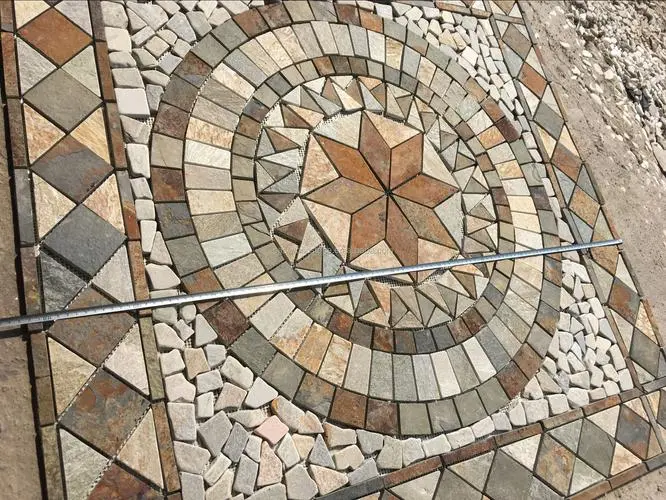Introduction
When it comes to enhancing the exterior of your home, one of the most popular and visually appealing options is the use of cultured stone. Cultured stone, also known as manufactured or artificial stone, is a versatile and durable material that mimics the look and feel of natural stone. This article will explore the various aspects of using cultured stone for your home's exterior, including its benefits, installation process, maintenance requirements, and design options.
Benefits of Cultured Stone Exterior
1. Aesthetic Appeal: One of the primary reasons homeowners choose cultured stone for their exteriors is its aesthetic appeal. Cultured stone can add a touch of elegance and sophistication to any home, creating a timeless and classic look that enhances curb appeal.
2. Versatility: Cultured stone comes in a wide range of colors, textures, and shapes, allowing homeowners to customize their exterior design to suit their preferences. Whether you prefer a rustic, traditional, or modern look, there is a cultured stone option to match your style.
3. Cost-Effective: Compared to natural stone, cultured stone is a more cost-effective option for homeowners looking to achieve the look of stone without breaking the bank. Cultured stone is lighter and easier to install, which can help reduce labor costs and overall project expenses.
4. Durability: Cultured stone is made from a mixture of cement, aggregates, and pigments, making it a durable and long-lasting material for exterior applications. It is resistant to harsh weather conditions, fading, and chipping, ensuring that your home's exterior will maintain its beauty for years to come.

5. Easy Installation: Cultured stone is designed for easy installation, whether you choose to hire a professional contractor or tackle the project yourself. With the right tools and instructions, you can quickly transform your home's exterior with the beauty of cultured stone.
Installation Process
Before installing cultured stone on your home's exterior, it is essential to prepare the surface properly. Here are the general steps involved in the installation process:
1. Surface Preparation: The existing exterior surface should be cleaned and free of any debris, dirt, or loose materials. It is crucial to ensure that the surface is smooth and level to achieve a successful installation.
2. Waterproofing: To protect the exterior walls from moisture and water damage, it is recommended to install a waterproofing membrane or barrier before applying the cultured stone.
3. Application of Scratch Coat: A scratch coat is applied to the exterior surface to create a rough texture that helps the cultured stone adhere properly. The scratch coat is typically made of mortar mixed with sand and water.
4. Setting Tumbled stepstone pavers for a weathered look : Once the scratch coat has dried, the cultured stone pieces are individually placed on the surface, following the desired pattern and design. Mortar is used to secure the stones in place and create a seamless finish.
5. Grouting: After the cultured stone is set and secure, grout is applied between the stones to fill in any gaps and create a polished look. Grout color can be matched to the cultured stone or chosen for contrast, depending on the desired aesthetic.
Maintenance Requirements
While cultured stone is a durable material, it still requires regular maintenance to ensure its longevity and appearance. Here are some maintenance tips for caring for your cultured stone exterior:
1. Cleaning: To keep your cultured stone exterior looking its best, regularly clean it with a mild detergent and water solution. Avoid using harsh chemicals or abrasive cleaners that can damage the surface of the stone.
2. Sealing: Depending on the type of cultured stone used, it may be beneficial to apply a sealant to protect the surface from stains, moisture, and UV damage. Consult with the manufacturer or a professional contractor to determine the appropriate sealant for your specific cultured stone.
3. Inspections: Periodically inspect your cultured stone exterior for any signs of damage, such as cracks, chips, or discoloration. Addressing these issues promptly can prevent further damage and maintain the overall integrity of the stone.
4. Repairs: If you notice any damage to your cultured stone exterior, such as loose or missing stones, contact a professional contractor to make the necessary repairs. Attempting to repair the stone yourself can result in further damage and compromise the structural integrity of the exterior.
Design Options
Cultured stone offers a wide range of design options for homeowners looking to enhance their home's exterior. Some popular design choices include:
1. Traditional Elegance: Cultured stone can be used to create a traditional and elegant exterior, reminiscent of classic stone buildings. Choose a neutral color palette and intricate stone patterns to achieve a sophisticated look.
2. Rustic Charm: For a more rustic and cozy exterior, opt for a textured and weathered cultured stone finish. Pair the stone with wooden accents and lush landscaping to create a warm and inviting facade.
3. Modern Minimalism: Cultured stone can also be used to achieve a modern and minimalist exterior design. Choose sleek and simple stone shapes in monochromatic colors for a contemporary look that complements a modern home aesthetic.
4. Mixed Materials: To add visual interest and dimension to your home's exterior, consider combining cultured stone with other materials such as wood, metal, or stucco. Mixing materials can create a unique and personalized look that sets your home apart.
Conclusion
Cultured stone exterior offers homeowners a versatile, durable, and aesthetically pleasing option for enhancing the curb appeal of their homes. With its wide range of design options, easy installation process, and low maintenance requirements, cultured stone is an excellent choice for those looking to achieve the timeless beauty of natural stone without the high cost and maintenance associated with it. Consider incorporating cultured stone into your home's exterior design to create a lasting impression and elevate the overall aesthetic appeal of your property.
